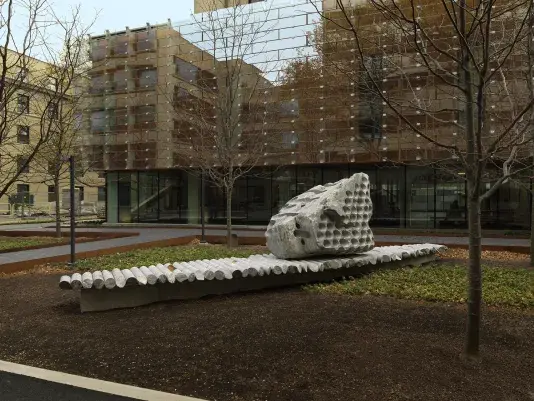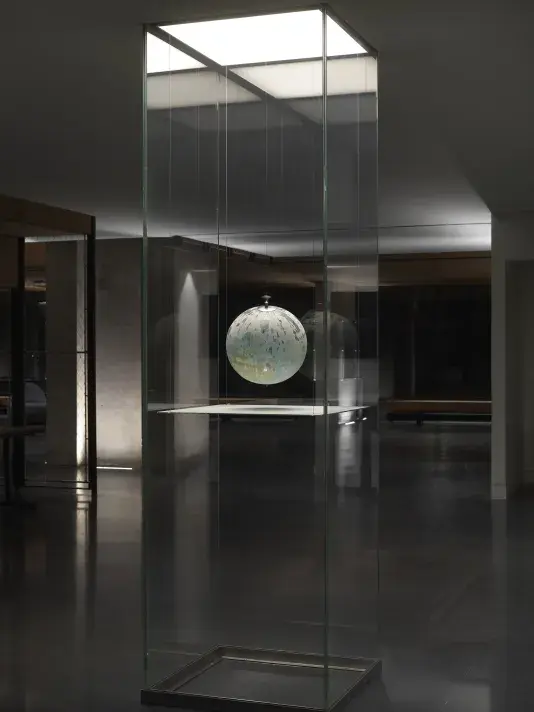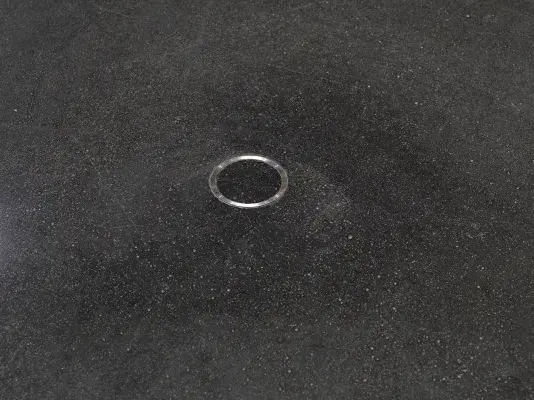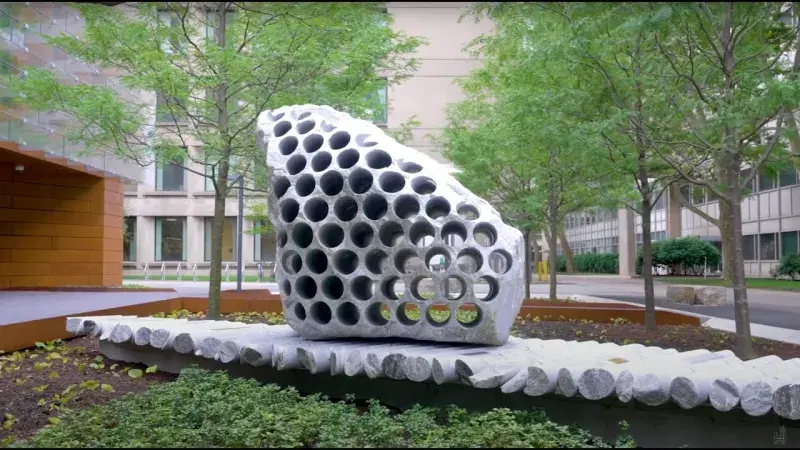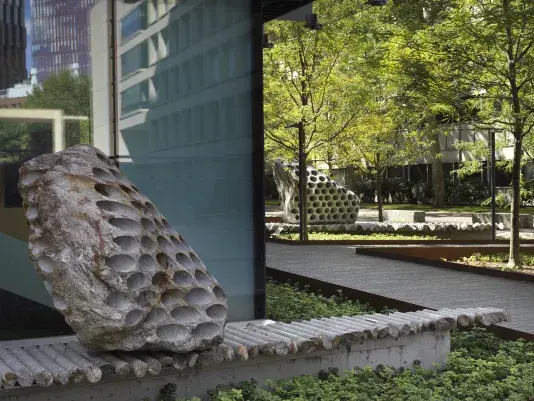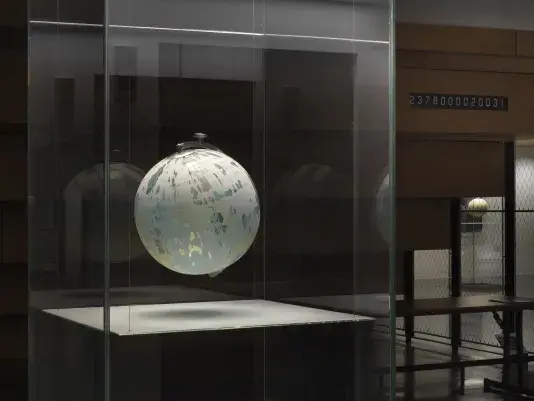Rendering: by AW Architects. Artwork rendering: by Studio Julian Charrière.
Everything Was Forever Until It Was No More, 2023

Julian Charrière’s first major public art commission in the United States is installed at MIT’s new Tina and Hamid Moghadam Building (Building 55), designed by Cambridge-based Anmahian Winton Architects.
The building is situated on the northern side of the I.M. Pei-designed Cecil and Ida Green Building (Building 54) and serves as the new lobby and grand entryway to the Department of Earth, Atmospheric, and Planetary Sciences, the Environmental Solutions Initiative, and the MIT-Woods Hole Oceanographic Institute Joint Program.
Charrière is known for his elegant conceptual works that investigate how humans inhabit the world, and how it in turn inhabits us. His commissioned installation, Everything Was Forever Until It Was No More, is composed of three works carefully brought into dialogue with the building’s architecture: Not All Who Wander Are Lost comprises three massive glacial erratic rocks, meticulously cored; We Are All Astronauts consists of encased vintage globes that have been abraded with sandpaper made from mineral samples, and Pure Waste is a synthetic diamond produced with atmospheric carbon and human breath collected through direct air capture technology. Together, these works thematize the precarious limits of extraction, the arbitrariness of geopolitical boundaries on an endangered planet, and a poetics of environmental reparation.
Julian Charrière (b. 1987) was born in Morges, Switzerland and lives in Berlin. His work examines the representation and perception of the natural world in an age of planetary ecological change. He studied with the artist Olafur Eliasson as a participant in his Institut für Raumexperimente (Institute for Spatial Experiments) at the Berlin University of the Arts. His work has been exhibited at institutions across the world, including solo presentations at the San Francisco Museum of Art, Langen Foundation, Dallas Museum of Art, Museo d’Arte Moderna di Bologna, Berlinische Galerie, and Musée Cantonal des Beaux-Arts de Lausanne, among others.
Note: Charrière’s suite of works, Everything Was Forever Until It Was No More, borrows a title of the 2005 book by anthropologist Alexei Yurchak. While Yurhcak’s scholarship covers a very different subject matter on “late” Soviet socialism, Charrière was inspired by Yurchak’s study of the collapse of a system and the struggle to imagine an alternative. In Charrière’s work, this expands through a material poetics that considers life in planetary systems and the limitations of anthropocentric thinking.
